
材料研究述评(英文)(Accounts of Materials Research)(国际刊号) 知网目次
- 主管单位:
上海市教育委员会
- 主办单位:
上海科技大学
- 国际刊号:
: 2643-6728
- 国内刊号:
- 学科分类:
- 字数:
8000-28000
- 有无基金:
/有基金 100.0%
- 周期:
国际号刊-月刊
- 特殊属性:
外文期刊
- 电话:
- 邮箱:
eic@stu.acs.org(官网邮箱)
- 复合因子:
0
- 综合因子:
0
- 收录:
知网目次
- 级别:
期刊简介
《材料研究述评》期刊已被查看: 次
更新频次
低频栏目:
2023年04期其他-16.7%-期平均发文量8篇
2023年03期其他-16.7%-期平均发文量9篇
2023年02期其他-16.7%-期平均发文量8篇
2023年01期其他-16.7%-期平均发文量8篇
2022年12期其他-16.7%-期平均发文量10篇
2022年11期其他-16.7%-期平均发文量9篇
单位占比
其他-100.0%一作占比
/有基金-100.0%投稿指南
1、该刊只有国际刊号。
2、投稿方式:在线投稿。
3、刊内网址:http://pubs.acs.org/amr
自动跳转至:
https://pubs.acs.org/journal/amrcda
http://www.shanghaitech.edu.cn/eng
http://www.acs.org
4、投稿网址:
https://acsparagonplus.acs.org/psweb/loginForm?code=1000
5、官网邮箱:eic@stu.acs.org
(更多编辑邮箱请查看期刊官网信息)
6、出刊日期:月刊,一年出版12期。
7、微信公众号:AMR材料研究述评
2024年4月25日星期四
《材料研究述评(英文)》期刊介绍
【主办单位上海科技大学官网信息】
https://www.shanghaitech.edu.cn/2021/0706/c1001a67384/page.htm
《材料研究述评》(Accounts of Materials Research,AMR)是上海科技大学主办的首个国际学术期刊,2020年10月创刊(月刊),2021年5月被ESCI收录。为方便读者进一步了解AMR刊出的材料科学与工程优秀研究成果,AMR编辑部推出“《材料研究述评》封面图文集锦”,通过科学与视觉设计的交融促进学术交流。首期集锦介绍AMR创刊以来出版的9期的封面文章,这些文章聚焦催化材料、金属材料、有机半导体、二维材料、液滴超控材料以及水处理材料。
AMR编委、美国国家科学院院士、加州大学伯克利分校杨培东教授表示:尽管还刚刚起步,AMR的高水平和独特风格已经得到广大材料界科研人员的认可和欢迎,相信AMR会越办越好。
由上海科技大学主办、上海科技大学与美国化学会共同出版的AMR于2020年获“中国科技期刊卓越行动计划高起点新刊项目”支持,主要发表简明扼要的评论性综述文章,概述材料科学和工程各领域的基础和应用研究——这些综述聚焦于作者自己的研究,旨在向读者介绍系统的研究工作;也发表前瞻性观点。AMR致力于促进材料领域内不同分支的交融、助力全球材料科学与工程的发展和材料人的成长,与美国化学会综述期刊Accounts of Chemical Research和Chemical Reviews一起组成新的高影响力综述期刊平台。期刊免费开放阅读至2021年底。
《材料研究述评(英文)》作者指南
【官网信息】
Author Guidelines
Preliminary Approval Of Articles
Manuscripts are submitted in response to an invitation, which may come at the advice of the editorial board or in response to an author’s proposal. Authors wishing to submit a proposal for an article or a viewpoint should follow the instructions given in detail below. Proposals will be reviewed by the editorial board, who may consult the editorial advisory board or other experts, and final decisions regarding a subsequent invitation to submit will be forwarded by the Editor-in-Chief. The editorial board will not consider proposals from authors whose work has been recently highlighted in the journal (typically, the past two years), except under special circumstances. Key to a successful proposal is a convincing statement that addresses the following questions: Why this topic? Why these authors? Why now?
When responding to an invitation, authors should closely follow the instructions presented in the Preparation of Manuscripts section below to expedite the review and publication of their work. Each submission must include the author’s postal and e-mail addresses and telephone numbers.
All manuscripts, whether specifically solicited by the Editor-in-Chief or invited in response to a proposal, are sent to competent readers for criticism both of scientific content and of readability.
Scope Of The Journal
Accounts of Materials Research is a journal of concise articles describing recent research developments in materials science and engineering. Each Account is directed not only to specialists in the field but also to a broad range of scientists who wish to keep abreast of the best current research in fields other than their own. Readability by the non-expert is therefore essential. Most manuscripts are submitted after invitation by the Editor-in-Chief, but unsolicited proposals, which may result in an invitation to submit a manuscript, are also considered.
Materials research is diverse and inclusive by nature. We believe in the strength of diversity in all its forms because inclusion of and respect for diverse people, experiences, and ideas lead to superior materials solutions to societal challenges and advancement of materials research itself globally.
Manuscript Types
Articles
A typical Account discusses a topic of intense interest to the author and focuses primarily on the author’s own experimental or theoretical results. Unpublished data may be included, but only to a minor extent. Articles should present salient experimental discoveries and theoretical results, interpret their significance, establish perspective with respect to earlier work and to contemporary research by other investigators, evaluate the present state of the subject, and cast a glance to the future.
A good introduction, including a historical orientation, is critical. Terms and concepts unique to the research area must be carefully explained or defined. A short section of concluding remarks should discuss the broader significance of the work, view it in perspective, and mention applications or future prospects. Accounts looks with favor on styles of presentation somewhat less formal than those that prevail in much scientific writing. Comprehensive reviews do not fall within the mission of Accounts.
Viewpoints
Viewpoints examine critically a question of current interest and draw new generalizations or new perspectives from the evidence. These brief non-peer reviewed opinions include theoretical implications, mechanistic interpretation, significance of data, or definitive experiments and should not be laudatory or for establishing priority. Controversial viewpoints are welcome, as are ones expressing opinions contrasting with those in published Accounts. Viewpoints are substantially shorter than articles. The author should be an expert in the field.
ACS Publishing Center
While this document will provide basic information on how to prepare and submit the manuscript as well as other critical information about publishing, we also encourage authors to visit the ACS Publishing Center for additional information on everything that is needed to prepare (and review) manuscripts for ACS journals and partner journals, such as
Mastering the Art of Scientific Publication, which shares editor tips about a variety of topics including making your paper scientifically effective, preparing excellent graphics, and writing cover letters.
Resources on how to prepare and submit a manuscript to ACS Paragon Plus, ACS Publications’ manuscript submission and peer review environment, including details on selecting the applicable Journal Publishing Agreement.
Sharing your research with the public through the ACS Publications open access program.
ACS Reviewer Lab, a free online course covering best practices for peer review and related ethical considerations.
Manuscript Preparation
Submit with Fast Format
All ACS journals and partner journals have simplified their formatting requirements in favor of a streamlined and standardized format for an initial manuscript submission. Read more about the requirements and the benefits these serves authors and reviewers here.
Manuscripts submitted for initial consideration must adhere to these standards:
Submissions must be complete with clearly identified standard sections used to report original research, free of annotations or highlights, and include all numbered and labeled components.
Figures, charts, tables, schemes, and equations should be embedded in the text at the point of relevance. Separate graphics can be supplied later at revision, if necessary.
A two-column manuscript template is available and can be used for manuscripts submitted to any ACS journal or partner journal. Templates are not required but may be useful to approximate how an article will compose. For manuscripts with word count limits, authors are not required to fit content into a page limit based on the template.
References can be provided in any style, but they must be complete, including titles. For information about the required components of different reference types, please refer to the ACS Style Quick Guide.
Supporting Information should be submitted as a separate file(s).
……
更多详情:
https://publish.acs.org/publish/author_guidelines?coden=amrcda
上一篇:眼科实践与研究新进展(英文)(Advances in Ophthalmology Practice and Research)(OA期刊)(国际刊号)下一篇:覆铜板资讯(内刊)
《材料研究述评》同类一般工业技术期刊
-
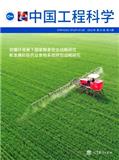
中国工程科学
北核,CSCD,科核,武A+
CN中文-双月刊影响因子3.71
-
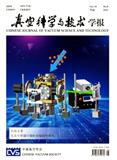
真空科学与技术学报
北核,科核,CSCD扩
CN中文-月刊影响因子0.676
-
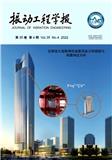
振动工程学报
北核,CSCD,科核,武A-,高T1,高T2,EI(中国2024)
CN中文-月刊影响因子1.641
-
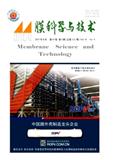
膜科学与技术
北核,CSCD,科核,武A
CN中文-双月刊影响因子1.295
-
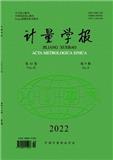
计量学报
北核,科核,CSCD扩,高T1,武B+
CN中文-月刊影响因子2.016
-

材料科学与工程学报(原:材料科学与工程)
北核,科核,CSCD扩,武A-,高T2
CN中文-双月刊影响因子0.969
-
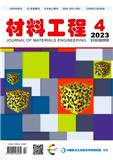
材料工程
北核,CSCD,科核,武A+,高T1,高T2,EI(中国2024)
CN中文-月刊影响因子2.158
-
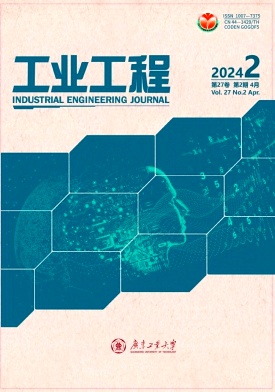
工业工程
科核,武A-
CN中文-双月刊影响因子1.569
常见问题
-
材料研究述评杂志社官网、联系方式是什么?
材料研究述评杂志社官网:https://pubs.acs.org/journal/amrcda
投稿网址:https://acsparagonplus.acs.org/psweb/loginForm?code=1000
投稿邮箱:eic@stu.acs.org(官网邮箱) -
材料研究述评杂志是核心期刊么?
材料研究述评不是核心期刊,级别是:, 是:一般工业技术分类下的知网目次收录的期刊。
-
请问你们是材料研究述评杂志社吗?
我们不是《材料研究述评》杂志社。本站主要从事期刊信息展示与期刊推荐,不是任何杂志官网,直投稿件请联系杂志社。本站仅提供免费的学术指导、论文辅导、期刊投稿信息整理收集服务。
-
你们指导服务后可以保证文章被发表吗?
期刊发表的成功与否,主要取决于文章内容的质量。编辑老师会根据研究领域、创新性等多因素进行考量。我们会帮助您理解期刊的发表要求,助力提升发表几率,从而增加发表的机会。
-
晋级论文能否在报纸上发表?
在学术界,论文的发表往往被视为研究者职业发展的重要一环。晋级论文,即为了获得更高职称或学术地位而撰写的学术论文,通常需在专业期刊上发表。然而,许多人可能会问
